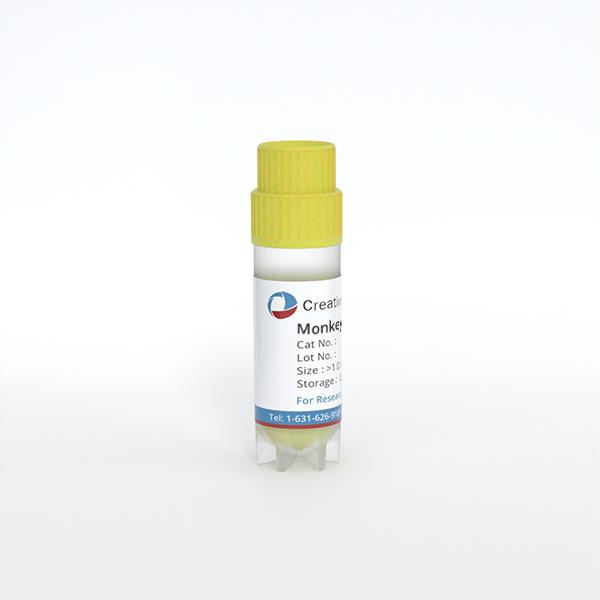Featured Products
Hot Products
ONLINE INQUIRY

Cynomolgus Monkey Liver Kupffer Cells
Cat.No.: CSC-C4757L
Species: Monkey
Source: Liver
Cell Type: Kupffer Cell
- Specification
- Q & A
- Customer Review
Cat.No.
CSC-C4757L
Description
Cynomolgus Monkey Liver Kupffer Cells are derived from Cynomolgus monkey liver tissue. Cells are grown in tissue culture flasks and incubated in Creative Bioarray' Cell Culture Medium for 2-5 days. Prior to shipping, cells at passage 0 are detached from flasks and cryopreserved in vials. Each vial contains 3x10^6 cells and is delivered frozen. Cells are negative for bacteria, yeast, fungi, and mycoplasma. Cells are tested for expression of markers using antibodies, CD11b by flow cytometry. Cells can be expanded on a multiwell culture plate ready for experiments under the cell culture conditions specified by Creative Bioarray. Repeated freezing and thawing of cells is not recommended.
Species
Monkey
Source
Liver
Recommended Medium
Cell Type
Kupffer Cell
Disease
Normal
Quality Control
Cynomolgus Monkey Liver Kupffer Cells are negative for bacteria, yeast, fungi, and mycoplasma.
Storage and Shipping
Creative Bioarray ships frozen cells on dry ice. On receipt, immediately transfer frozen cells to liquid nitrogen (-180 °C) until ready for experimental use.
Never can cryopreserved cells be kept at -20 °C.
Never can cryopreserved cells be kept at -20 °C.
Citation Guidance
If you use this products in your scientific publication, it should be cited in the publication as: Creative Bioarray cat no. If your paper has been published, please click here to submit the PubMed ID of your paper to get a coupon.
Ask a Question
Write your own review
- You May Also Need
Related Products


